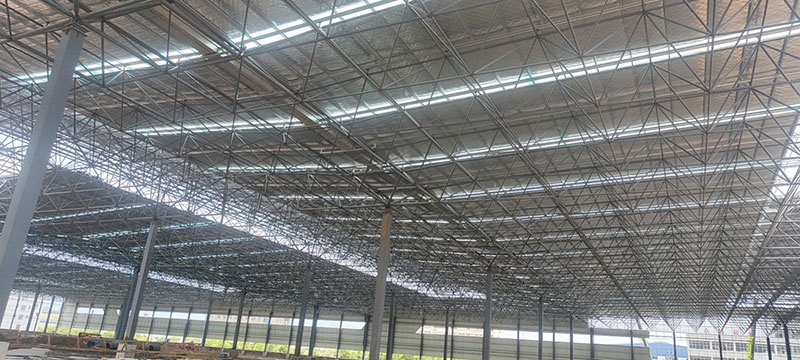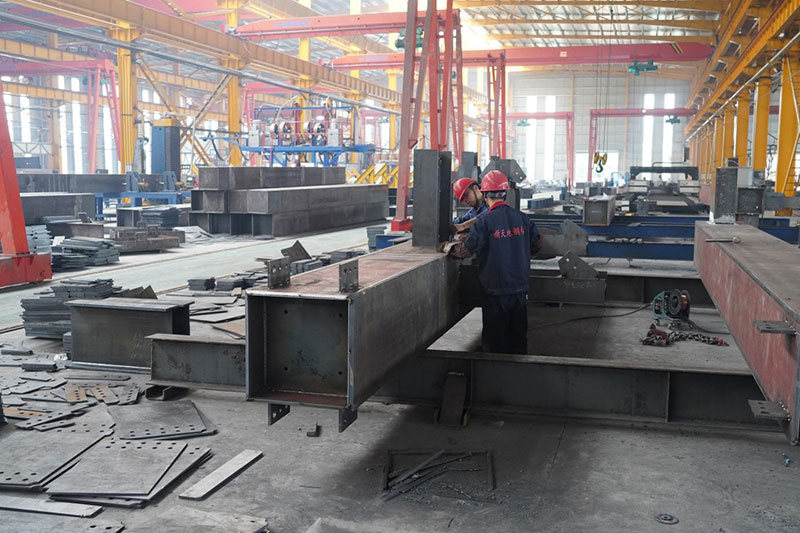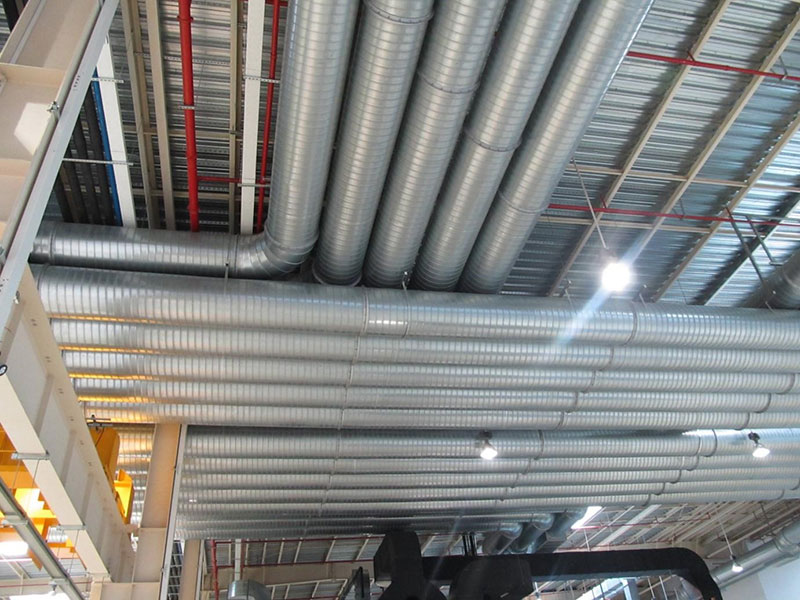At XTD Steel Structure, we help our customers build wiser, cleaner factories designed for performance, longevity, and value. In this piece, we share why steel is the better choice for energy-efficient factory buildings and how to design your next facility to meet today's sustainability and efficiency expectations.

Why Steel is Ideal for Energy-Efficient Factory Buildings
Steel is the base of much modern construction, and for good reason. Like
Prefabricated factory buildings, in the design of energy-efficient factory buildings, steel offers several one-of-a-kind benefits that make it both a cost-effective and environmentally friendly choice:
- Proper match with thermal insulation: Steel frame construction easily accommodates high-tech insulation materials, making it simpler to maintain interior climate control and reduce energy waste.
- Precise construction: Steel prefabricated components allow for precise construction, which reduces the quantity of material wasted and the energy required to assemble them.
- Recyclability and longevity: Steel can be recycled an unlimited number of times without losing its strength. It reduces the demand for new raw materials and supports a circular economy.
- Light strength: Though steel is strong, it is light in weight, reducing transport costs and foundation requirements.
Overall, steel makes it possible to construct compact, well-insulated factory buildings that maximize energy efficiency and reduce the cost of doing business in the long term.
Key Design Principles for Energy-Efficient Factory Buildings

Designing an energy-efficient factory building goes far beyond choosing the right materials. Strategic design must be accomplished in such a way that the building is integrated into its surroundings. A few strategic design strategies are as follows:
1. Passive Solar Design
Passive solar design is a matter of where to put windows, walls, and floors to allow solar heat and light to circulate naturally. Steel frames allow for large openings and big windows without compromising strength, ideal for maximizing daylight and reducing the demand for artificial lighting and heating.
2. High-Performance Insulation
Proper insulation is essential for energy-efficient factory buildings. Proper insulation can easily be fitted inside steel buildings to insulate roofs, ceilings, and walls. This helps prevent energy waste, avoids overheating of machinery, and keeps the internal temperature consistent.
3. Ventilation and Airflow
Control of airflow is essential in minimizing HVAC energy use. Steel joists and columns offer ducting flexibility and passive ventilation system configurations. Natural heat escape can be facilitated through the installation of roof ventilators or louvers, especially in large facilities where heat builds up quickly.
4. Natural Lighting
Skylights, light wells, and translucent wall panels reduce the reliance on electric lighting. The strength of steel as a bearing material allows heavier roof spans and higher ceiling heights to support larger daylighting solutions and better worker health.
5. Integration of Renewable Energy
Steel roofing systems are perfectly suited for integration with solar panels and other alternative technologies. Strength and durability offer long-term support without compromising safety.
Building Envelope and Material Issues
The building envelope is central to the function of an energy-efficient factory building. It holds everything which separates the inside from the outside: walls, roof, doors, and windows.
- Steel wall panels can be insulated using layers of materials such as polyurethane or mineral wool.
- Cool roofs, made up of coated steel, reflect sunlight and reduce the heat island effect, which helps in reducing cooling loads.
- Rigid steel frames can be properly fitted with energy-efficient windows and doors to reduce air leakage and maximize performance.
The structure provides a continuous, high level of thermal flow insulation that ensures maximum internal climate control and energy efficiency.
The Role of Steel in Environmentally Sustainable Industrial Buildings

Steel isn't only energy efficient—it's also eco-friendly. Here's why:
1. Recycled Content
Modern structural steel can have up to 90% recycled content, reducing virgin resource extraction.
2. Low On-Site Waste:
Prefabricated steel components are made one at a time for each project, meaning fewer site errors and less material waste.
3. Smaller Carbon Footprint:
A steel-framed building that is suitably insulated will use less energy throughout its life of the building, reducing its carbon footprint as well as running costs.
According to the
World Steel Association, steel buildings are among the most recycled and durable industrial structures of our time.
Cost Efficiency and Long-Term Savings
While the upfront cost of a steel building might seem higher than with traditional materials, the long-term payback is substantial:
- Reduced energy costs because of improved insulation and natural daylighting
- Maintenance has been reduced because of corrosion-resistant coatings and rigid construction.
- Shorter construction time, leading to reduced labor and downtime expenses
- Increased performance that lessens replacement and repair needs
Overall, an energy-efficient factory building made of steel gives a sooner return on investment compared to the conventional method of building.

Planning Your Energy-Efficient Factory Building
Here's a practical checklist to guide your journey toward building smarter with a
steel structure:
- Choose an experienced steel design partner who understands energy goals.
- Define your energy and sustainability targets before the design phase begins.
- Select appropriate insulation materials based on your climate zone.
- Incorporate renewable systems such as solar panels or wind turbines.
- Implement post-construction performance monitoring to track and improve results.
At XTD Steel Structure, we're ready to support your project from the initial consultation to the completed build, ensuring that every part of your factory contributes to energy efficiency.
Interested in getting started? Reach out for a free consultation or browse our steel structure solutions.



